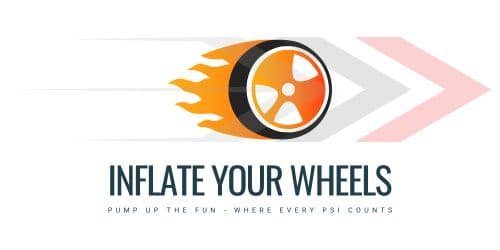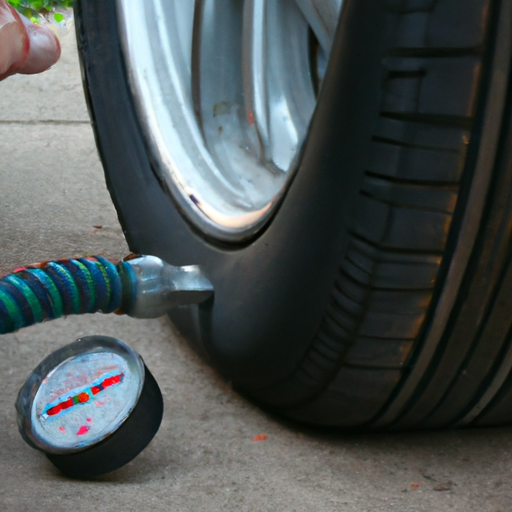Are you tired of waiting at the gas station for your tires to be inflated? Wondering how long it will take to pump air into your car’s tires using a portable tire pump? In this article, we will explore the average time it takes to inflate a tire using a portable tire pump, providing you with valuable insights and tips to help you save time on your next tire inflation. Get ready to hit the road faster and hassle-free!
How Long Does A Portable Tire Pump Take?
Table of Contents

Factors affecting the time taken by a portable tire pump
When it comes to using a portable tire pump, there are several factors that can have an impact on the amount of time it takes to fully inflate a tire. Understanding these factors can help us make more informed decisions when choosing a portable tire pump and also help us optimize our pumping time. Let’s take a closer look at some of the key factors that can affect the time taken by a portable tire pump.
1. Tire pressure
The initial pressure of the tire plays a significant role in determining the pumping time. If the tire is completely flat, it will require more time and effort to inflate compared to a tire that is only slightly deflated. This is because the pump needs to work harder to fill the tire with air, which can result in a longer pumping time.
2. Tire size
The size of the tire also affects the time taken by a portable tire pump. Larger tires will require more air to reach the desired pressure, which naturally takes longer to achieve. On the other hand, smaller tires will require less air and can be inflated more quickly. It’s important to consider the size of the tires we plan to inflate when choosing a portable tire pump, as this can impact our overall pumping time.
3. Power source
The power source of a portable tire pump can greatly impact its performance and pumping time. Some portable tire pumps are battery-operated, while others can be plugged into a vehicle’s power outlet. Battery-operated pumps may be more convenient and portable, but they may have a slower inflation rate compared to pumps that are directly connected to a power source. It’s important to take the power source into consideration when choosing a portable tire pump and understand how it may impact the pumping time.
4. Pump type
Different types of portable tire pumps are available on the market, including manual pumps, electric pumps, and air compressors. Each type of pump has its own advantages and disadvantages, which can affect the pumping time. For example, manual pumps require physical effort to operate and may take longer to fully inflate a tire compared to electric pumps or air compressors. Electric pumps and air compressors, on the other hand, can provide faster inflation rates but may be bulkier and less portable. Choosing the right pump type based on our specific needs and priorities can help reduce our overall pumping time.
5. Pump capacity
The capacity of the pump, measured in terms of air volume it can deliver per minute, is another important factor to consider when evaluating the pumping time. Higher capacity pumps can deliver more air in a shorter amount of time, which can significantly reduce the pumping time. On the other hand, pumps with lower capacity may require more time to inflate the tire fully. It’s important to choose a portable tire pump with a suitable capacity based on the size and pressure requirements of the tires we plan to inflate.
Average pumping time for different scenarios
Now that we have a better understanding of the factors that can affect the time taken by a portable tire pump, let’s explore the average pumping time for different scenarios. This will give us a clearer idea of how long it may take to inflate our tires under different circumstances.
1. Pumping a completely flat tire
When inflating a completely flat tire, the pumping time will typically be the longest. The exact time will depend on the factors mentioned earlier, such as the tire size, pump capacity, and power source. On average, it may take anywhere from 5 to 10 minutes to fully inflate a flat tire. However, it’s important to note that this can vary significantly depending on the specific pump and circumstances.
2. Topping up a slightly deflated tire
If we are only topping up a slightly deflated tire, the pumping time will generally be shorter compared to inflating a completely flat tire. In this scenario, it may take around 2 to 5 minutes to reach the desired pressure, again depending on various factors. Since less air is required to bring the tire back to the recommended pressure, the pumping time is typically reduced.
3. Checking and adjusting tire pressure
Lastly, when simply checking and adjusting the tire pressure, the pumping time will be the shortest. In this case, we are not inflating the tire from a completely flat state or topping up a significantly deflated tire. Instead, we are only making small adjustments to achieve the recommended pressure. This typically takes less than 2 minutes and is a quick and easy task.
Tips to reduce pumping time
While the pumping time can vary based on the factors mentioned earlier, there are a few tips we can follow to help reduce the overall time it takes to inflate our tires.
1. Ensure proper positioning
Positioning the portable tire pump properly is crucial for efficient and effective inflation. It’s important to ensure a secure connection between the pump and the tire valve to prevent air leakage. Additionally, holding the pump in the correct position can increase the airflow and reduce the pumping time. Taking a moment to position the pump correctly can make a noticeable difference in the overall pumping time.
2. Use a high-capacity pump
Choosing a portable tire pump with a high capacity can significantly reduce the pumping time. Higher capacity pumps deliver more air per minute, allowing for faster inflation. While high-capacity pumps may be slightly larger and bulkier, they can greatly improve efficiency and reduce the overall pumping time. Consider your specific needs and prioritize a high-capacity pump if reducing pumping time is important to you.
3. Maintain the pump regularly
Regular maintenance of the portable tire pump can help ensure optimal performance and reduce pumping time. This includes cleaning and lubricating the moving parts, checking for any damage or wear, and replacing any worn-out components. By keeping the pump in good condition, we can maximize its efficiency and reduce the time it takes to fully inflate our tires.
Conclusion
When it comes to using a portable tire pump, the time taken to inflate a tire can vary depending on several factors. Factors such as tire pressure, tire size, power source, pump type, and pump capacity all play a role in determining the pumping time. It’s important to consider these factors when choosing a portable tire pump, as they can have a significant impact on our overall pumping time.
While the pumping time can vary, there are ways to reduce it. Ensuring proper positioning, using a high-capacity pump, and maintaining the pump regularly are effective strategies to minimize the pumping time and make the tire inflation process more efficient.
By understanding the factors that affect pumping time and following these tips, we can make the most out of our portable tire pump and spend less time inflating our tires. So, whether we are dealing with a completely flat tire, topping up a slightly deflated tire, or simply checking and adjusting tire pressure, we can make the process quicker and more convenient. Remember, a little investment of time and effort in choosing the right pump and following best practices can go a long way in reducing the time spent using a portable tire pump.


Keep your car tires in peak condition with the right inflator.
Discovering the best tire inflator can be a game-changer for maintaining your vehicle. Explore our comprehensive Ultimate Guide to the Best Tire Inflators to make an informed decision.

